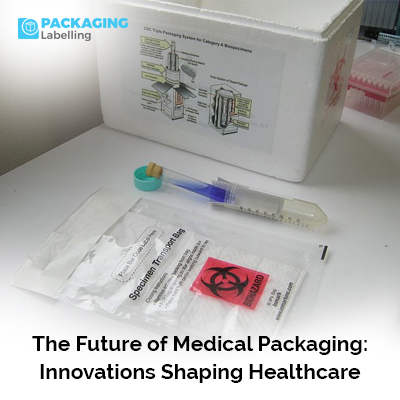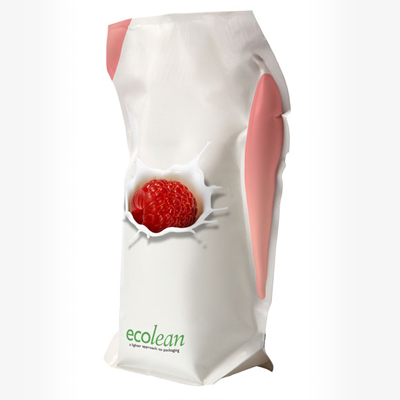The Future of Medical Packaging: Innovations Shaping Healthcare

Introduction:
Medical packaging plays a crucial role in ensuring the safety and efficacy of healthcare products. As technology continues to advance, the future of medical packaging holds exciting possibilities for enhancing patient care, reducing environmental impact, and improving overall efficiency in the healthcare industry.
I. Smart Packaging Technologies:
One of the most promising developments in medical packaging is the integration of smart technologies. Smart packaging involves the incorporation of sensors, RFID (Radio-Frequency Identification), and other advanced features to monitor and enhance the performance of medical products. For example, temperature-sensitive medications can benefit from smart packaging that provides real-time temperature monitoring during transportation, ensuring the integrity of the drugs.
II. Anti-Counterfeiting Measures:
The pharmaceutical industry has been grappling with the issue of counterfeit drugs for years. In the future, medical packaging is likely to see widespread adoption of advanced anti-counterfeiting measures. Technologies such as tamper-evident seals, holographic labels, and track-and-trace systems will become standard features, safeguarding patients from the risks associated with fake or substandard medications.
| Also Read: How do Evolving Trends in Medical Packaging Contribute to Health Preservation? |
III. Sustainable Packaging Solutions:
Environmental sustainability is a growing concern across industries, and healthcare is no exception. The future of medical packaging will witness a shift towards eco-friendly materials and practices. Biodegradable and compostable packaging materials, as well as reduced packaging waste, will become more prevalent. Manufacturers will prioritize sustainability to minimize the environmental impact of medical packaging while maintaining product safety.
IV. Personalized Packaging for Patient Adherence:
Improving patient adherence to medication is a persistent challenge in healthcare. Personalized packaging solutions, such as blister packs with integrated electronic reminders or smart pill bottles, can help patients stay on track with their medication regimens. These innovations not only enhance patient adherence but also provide valuable data to healthcare providers for monitoring and adjusting treatment plans.
V. Nanotechnology in Packaging:
Nanotechnology is making waves in various industries, and medical packaging is no exception. Nanomaterials offer unique properties such as increased strength, improved barrier properties, and enhanced drug stability. In the future, we can expect to see nanotechnology play a significant role in designing packaging that ensures the integrity of sensitive medical products, ultimately leading to better patient outcomes.
VI. Interactive Packaging for Improved Patient Education:
Patient education is crucial for successful healthcare outcomes. Interactive packaging, such as QR codes or augmented reality (AR) applications on packaging, can provide patients with essential information about their medications. This includes dosage instructions, potential side effects, and interactions with other medications. Empowering patients with easily accessible information directly from the packaging can contribute to safer and more effective healthcare practices.
VII. 3D Printing for Customized Packaging Solutions:
The rise of 3D printing technology opens up new possibilities for customized medical packaging. Tailored packaging solutions for specific medications or medical devices can be produced on-demand, reducing waste and ensuring a perfect fit. This level of customization can enhance the overall user experience for both healthcare providers and patients.
VIII. Improved Accessibility and Ease of Use:
Medical packaging of the future will prioritize accessibility and ease of use, particularly for patients with special needs or those requiring assistive devices. Packaging designs that are easy to open, close, and handle will become standard to accommodate a diverse range of patients, including the elderly and individuals with disabilities.
IX. Integration of Biometrics for Authentication:
Ensuring the authenticity of medical products is critical in preventing the distribution of counterfeit or substandard medications. The integration of biometric authentication features, such as fingerprint or iris scanning, directly into packaging, can add an extra layer of security. This technology will help verify the legitimacy of pharmaceuticals, providing patients and healthcare professionals with confidence in the products they use.
X. Regulatory Considerations and Standards:
As these innovations in medical packaging emerge, regulatory bodies will play a crucial role in establishing standards and guidelines to ensure safety, efficacy, and compliance. Collaboration between industry stakeholders, regulatory agencies, and healthcare professionals will be essential to navigate the evolving landscape of medical packaging and maintain the highest standards of quality.
Conclusion:
The future of medical packaging holds tremendous potential for revolutionizing healthcare delivery, patient safety, and environmental sustainability. From smart technologies to personalized packaging solutions, the integration of innovative features is poised to transform the way medical products are packaged and distributed. As these advancements continue to unfold, the healthcare industry can look forward to enhanced efficiency, improved patient outcomes, and a more sustainable approach to packaging practices. It is an exciting era for medical packaging, where technology and healthcare converge to shape a brighter and more resilient future.









